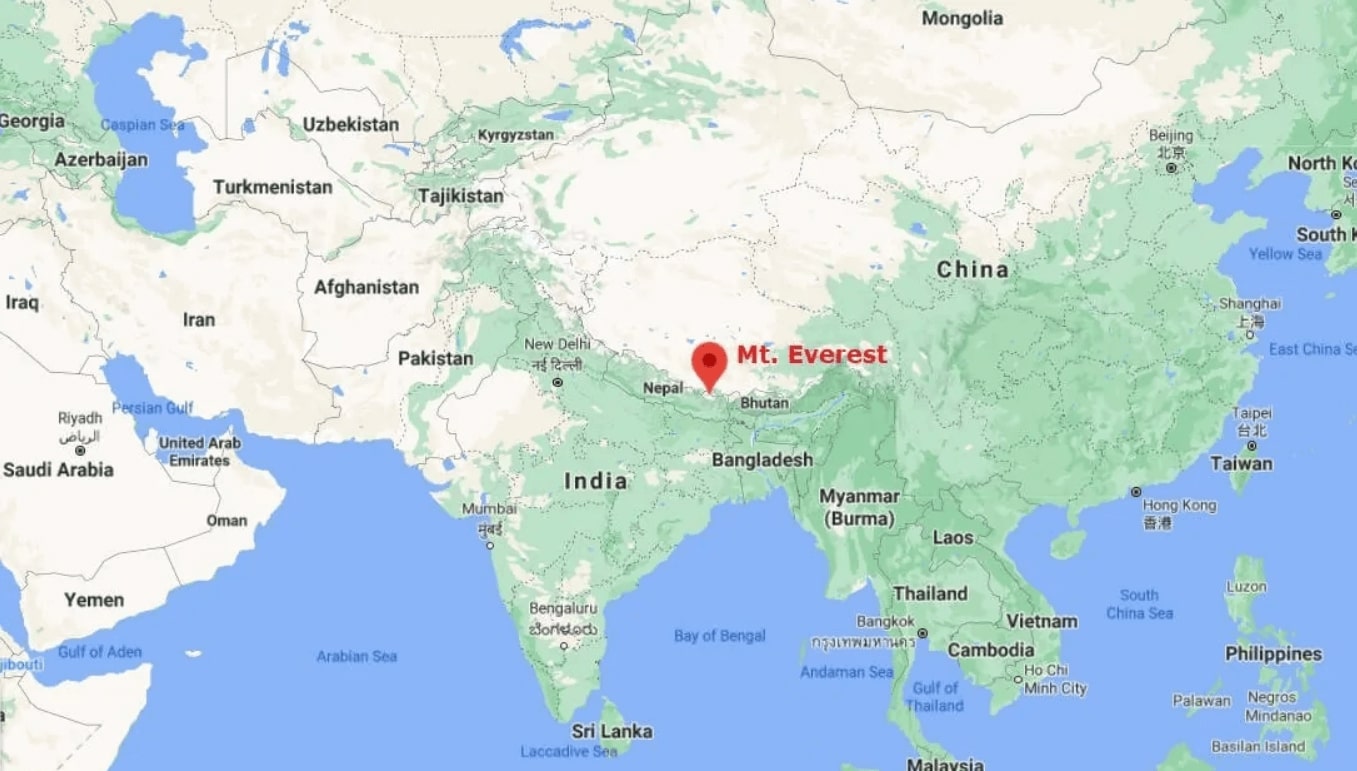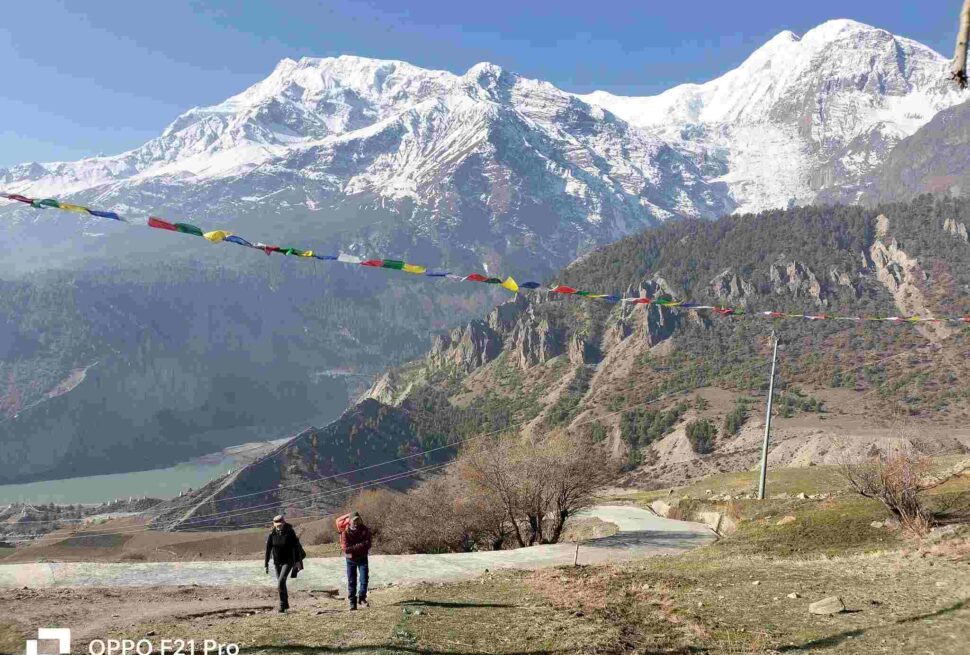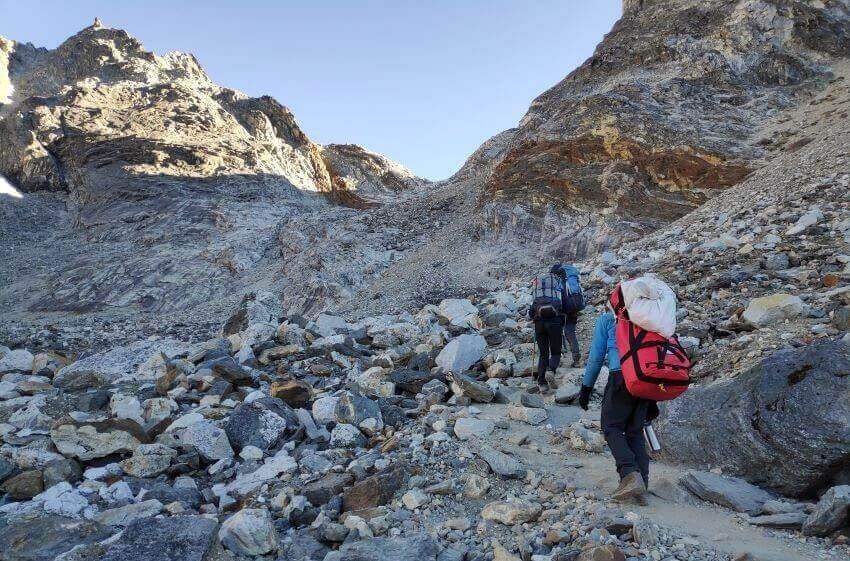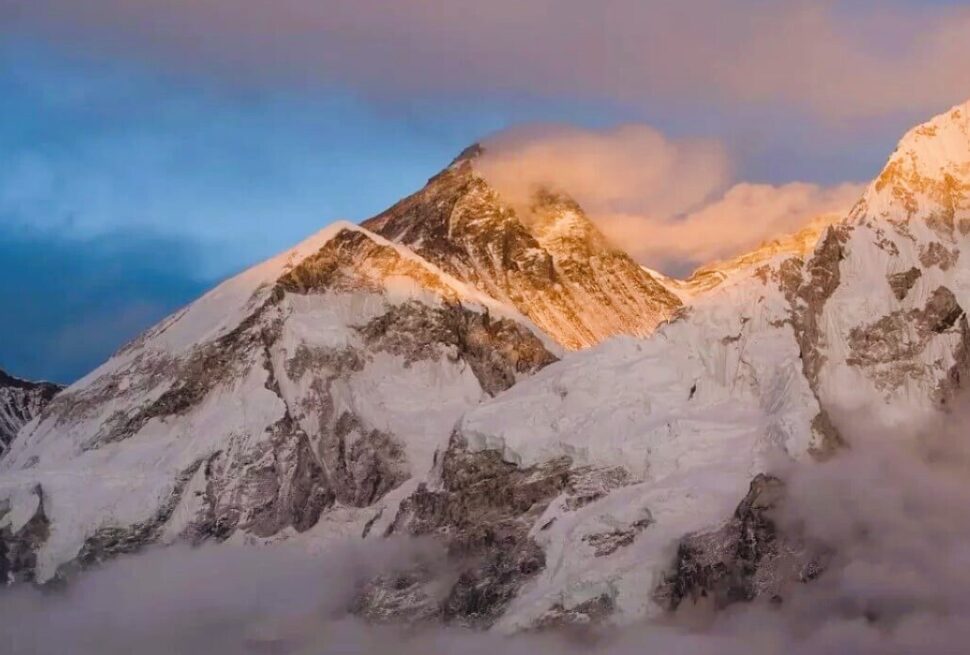Mount Everest is the Earth’s highest peak well known for its adventurous trekking. And, many adventurers and enthusiasts ponder: “Where is Mount Everest located on a map?”
To be precise, The location of Mt. Everest is in southern Asia, sharing the border between Nepal and China (Tibet Autonomous Region). It lies on both the Nepali side (27°59′17″N 86°55′31″E, 5,364 meters) and the Tibetan side (28°00′29″N 86°55′48″E, 5,181 meters), serving as starting points for expeditions.
Mount Everest Geographical Location
As the crown jewel of the Himalayas, it sits proudly on the crest of the great Himalayas in southern Asia. It shares the border between Nepal and the Tibet Region of China. This iconic peak holds immense geographical significance due to its extreme altitude and unique position.
Mount Everest Coordinates : Mount Everest’s exact location can be pinpointed using its geographical coordinates 27°59′N 86°56′E. 27 degrees, 59 minutes north which indicates the latitude and angular distance north of the equator. 86 degrees, 56 minutes east which indicates the longitude and angular distance east of the Prime Meridian.
Mount Everest in Tibet
While the summit of Mount Everest lies on the border between Nepal and China, the northern slopes are indeed located within the Tibet Autonomous Region of China. This region boasts a unique and captivating landscape that contributes to the overall experience of Mount Everest and the surrounding Himalayas.
The Tibetan Plateau, where the northern slopes reside, is the world’s highest and largest plateau, creating a surreal and unique high-altitude environment. The northern face of Everest offers a distinct perspective on the mountain, showcasing its dramatic slopes and challenging climbing routes.
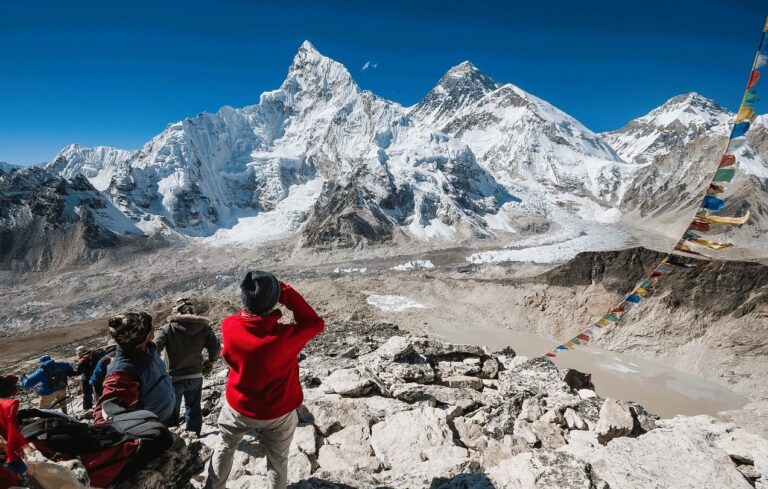
Locating Mount Everest on a Map
Where is Mount Everest located on a world map? This is a question for many trekkers. You can find Everest on a map by looking for the Himalayan mountain range and identifying the highest peak. Look for the Himalayan mountain range stretching across southern Asia.
Physical maps and online services like Google Maps also offer ways to explore its location.
How to Find Mount Everest on a World Map
Physical Map
- Choose a physical map that highlights mountain ranges and elevations.
- Locate the Himalayas and identify the highest peak, which is Mount Everest.
- Physical maps offer a better understanding of the surrounding terrain and the relative height of the mountain.
Online Map
- Popular online mapping services like Google Maps or Bing Maps allow you to zoom in on specific locations.
- Search for “Mount Everest” and explore the surrounding area in detail.
- Online maps often provide interactive features like terrain views and satellite imagery for a more immersive experience.
Mount Everest Base Camp Location
Mount Everest boasts two base camps, one on each side of the peak. The Nepal side of Everest Base Camp is located at 27°59′17″N 86°55′31″E and 5,364 meters (17,598 feet). The Tibet (China) side of Everest Base Camp is Located at 28°00′29″N 86°55′48″E and 5,181 meters (17,000 feet).
Both serve as starting points for expeditions attempting to climb Mount Everest. The Nepali base camp is generally seen as the more popular and well-developed option.
Where is Everest Base Camp Situated?
Nepal : Situated at 27°59′17″N 86°55′31″E and 5,364 meters (17,598 feet) above sea level.
Tibet (China): Located at 28°00′29″N 86°55′48″E and 5,181 meters (17,000 feet) above sea level.
Exploring Mount Everest on a Map
A map of the Mount Everest region offers more than just a pinpoint location of the world’s highest peak. It can be a gateway to understanding the mountain’s surrounding environment, the challenges it presents, and the unique experiences it offers.
Features Around Mount Everest
Mount Everest, the crown jewel of the Himalayas, is not just a peak but rather a centerpiece in a landscape with breathtaking features. Exploring these features on a map can enhance your understanding and appreciation of this iconic region.
Towering companions like Lhotse, Makalu, Cho Oyu, and Glacial Giants Khumbu Icefall, and Khangri Shar Glacier including some unique cultural Gems are the features of Mount Everest.
Landmarks
Mount Everest is amazing, but there’s more to see. Explore cool stuff like the icy Khumbu Icefall, giant Rongbuk Glacier, and windy Gorakshep. Visit colorful monasteries and the busy Sherpa town of Namche Bazaar. See where climbers start their journey at Everest Base Camps and the famous Hillary Step.
Overview of Everest Base Camp Trek
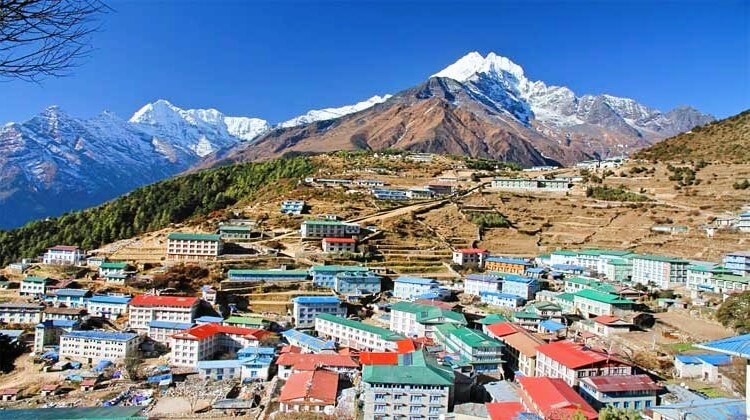
The Everest Base Camp Trek, a legendary adventure nestled in the heart of the Himalayas, offers a thrilling journey to the foot of the world’s highest mountain. EBC trek takes around 14-18 days, with additional acclimatization days possible. Difficulty level of Everest Base Camp ranges from moderate to challenging. While the trek itself is not technical, the high altitude and cold temperature resents unique challenges.
Training and preparation are crucial for successful completion, especially due to the high altitude. Obtaining the necessary permits and visas for Nepal or China is mandatory, depending on the route you choose. The trekking season typically falls between March-May and September-November, with specific weather conditions to consider. Tea houses, basic lodges, and camping options are available along the trail.
Best Packages for Everest Base Camp
Choosing the best package for the Everest Base Camp Trek depends on your budget, preferences, and desired level of comfort. Tidy Himalaya offers the best holiday package for Everest Base Camp, regardless of the experience. We offer top-notch service, a customized itinerary, and a great trekking experience throughout the trek.
Everest Base Camp Trek
The Everest Base Camp Trek offers a legendary adventure to the foot of the world’s highest mountain. Witness the majestic Everest and other Himalayan giants. Immerse yourself in Sherpa culture, and hike through diverse landscapes.
Everest Base Camp Luxury Trek
The Luxury Everest Base Camp Trek (14-16 days) offers a comfortable and hassle-free alternative to the classic experience. Instead of basic teahouses, you’ll be pampered in hotels or luxury lodges, often with additional amenities like porters and guided tours. This option prioritizes comfort and a smoother journey, ensuring you can focus on the breathtaking scenery and cultural encounters without worrying about logistics. Ideal for trekkers who want to conquer Everest Base Camp while minimizing burdens and maximizing comfort.
Everest Base Camp Short Trek
The Everest Base Camp Short Trek is an alternative trek for classic routes, offering a taste of the Everest region in a shorter time frame (typically 10-12 days). This trek is ideal for those who are short on time or have a lower level of fitness, but still want to experience the majesty of the Himalayas and reach the iconic Everest Base Camp.
Everest View Trek
The Everest View Trek, also known as the short trek to Mount Everest Base Camp, offers a stunning glimpse of the world’s highest peak without the full commitment of the Base Camp trek.
Witness the majestic Everest, along with Lhotse, Ama Dablam, and other Himalayan giants. Immerse yourself in the rich traditions and warm hospitality of the Sherpa people in charming villages like Namche Bazaar. The trek offers a moderate challenge with diverse landscapes and manageable altitude (reaching Namche Bazaar at 3,440 meters) This trek is a good option for those who are short on time, have a moderate fitness level, or want a less strenuous Everest experience.
Everest Three Passes Trek
The Everest Three Passes Trek is a legendary adventure in the Everest region. It pushes you beyond the typical Base Camp experience. This challenging yet rewarding trek takes you across three high mountain passes, offering breathtaking scenery and a unique perspective of the Himalayas. The trek is longer than the Everest Base Camp due to the additional passes and higher altitudes.
Everest Chola Pass Trek
The Everest Cho La Pass Trek combines the iconic Everest Base Camp experience with the thrilling challenge of crossing the Cho La Pass (5,420 meters). Offering a diverse and challenging journey, this trek is ideal for experienced trekkers seeking a unique perspective of the Everest region.
FAQs:
Mount Everest, the world’s highest mountain above sea level, between Nepal and the Tibet Autonomous Region of China. The Everest base Camp is located in Khumbu region at the Coordinates of 27°59′17″ N 86°55′31″ E (Nepali side) and 28°00′29″ N 86°55′48″ E (Tibetan side).
Yes, Mount Everest is located in Asia. Specifically, it sits on the border between Nepal and the Tibet Autonomous Region of China, in the southern part of the continent. It is considered the highest mountain above sea level in the world and is part of the Great Himalayas mountain range.
Mount Everest, the iconic peak that dominates the Himalayas, holds different names depending on the region and language:
- English: Mount Everest (most common name)
- Nepali: Sagarmatha, which translates to “Peak of Heaven” or “Forehead of the Sky.”
- Tibetan: Chomolungma, which translates to “Holy Mother” (Qomolangma) or “Goddess Mother of the World” (Jo-mo-glang-ma).
Chinese: 珠穆朗玛峰 (Zhūmùlǎngmǎ Fēng), which translates to “Peak Zhu Mu Lang Ma.”
No, Everest Base Camp is not actually located on Mount Everest itself. It’s a designated camping area situated at the foot of the mountain, serving as the starting point for expeditions attempting to climb the peak.
The official height of Mount Everest is 8,848.86 meters (29,031.69 feet). This measurement was jointly declared by Nepal and China in December 2020, finally resolving a long-standing debate.

